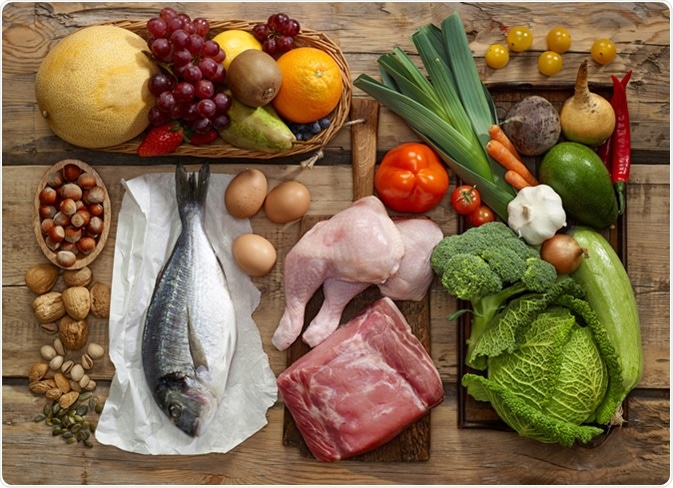Also called the caveman diet, the paleo diet is based on what our hunter-gatherer ancestors would have eaten during the Paleolithic period, which was 10,000 to 2.5 million years ago.

The diet encourages the consumption of whole foods such as seeds, nuts, fruits, vegetables, wild game and eggs, while excluding foods introduced through farming and industry such as dairy products, beans, grains, cereals, salt, alcohol, coffee and processed foods. Any foods that were not available during the Paleolithic period are thought to be deleterious to health and are forbidden. Paleo dieters hold that the body is not “built” for handling food that has been produced through agricultural or industrial processes and that food derived fro m these sources is the cause of illnesses such as diabetes, cancer and obesity.
Advocates of the paleo diet believe that by eating only the basic foods that our ancestors consumed, we would eradicate many of the problems that have arisen since new foods were introduced after the Neolithic Revolution, when the hunter-gatherer lifestyle was replaced by agriculture.
The paleo diet is a very popular and also highly controversial diet. Some of the advantages and disadvantages of following this eating plan are described below.

Advantages
- The diet is rich in potassium – Eating a lot of fruit and vegetables increases potassium levels, which is important for maintaining a healthy blood pressure and healthy kidney and muscle function.
- The fats are healthy – Consuming moderate amounts of unsaturated fats such as those found in nuts, avocado and olive oil gives rise to a healthy lipid profile.
- High protein content – Proteins are essential for growth and development of the skin, muscles, bone and cartilage. Adequate amounts of lean protein in the diet contribute to a healthy body composition and a lowered insulin response.
- Elimination of processed foods – The diet is comprised of whole foods, which means less salt and sugar is consumed. This improves blood sugar levels and blood pressure and can reduce the risk of cardiovascular disease and diabetes.
Disadvantages
- The food portions allowed by the diet exceed the recommended daily allowances s for those foods.
- Eliminating entire food groups can mean essential nutrients and vitamins are not included in the diet.
- People in the West often obtain their calcium from milk, cheese and yoghurt and those following the paleo diet are at risk of inadequate calcium consumption and therefore low bone and tooth density.
- The elimination of whole grains may mean a decreased intake of fiber, which is beneficial to gut health.
- The diet does not allow the consumption of legumes, which are highly beneficial to gut health and rich in magnesium, selenium and manganese.
- Humans today are not genetically identical to ancestors from the Paleolithic period, as the paleo diet assumes. We have evolved in order to adapt to our changing environment.
- The diet does not account for the wide range of foods that were available during the Palaeolithic period and there is inadequate evidence available for it to be established exactly what amount and proportions of foods were eaten during that period.
- It is not possible to fully adopt the same diet as people did in the Palaeolithic periods, simply because animals and plants have evolved since then and are different compared to what they would have been 10,000 years ago.
Sources
- How to really eat like a hunter-gatherer: Why the Paleo diet is half-baked, http://easacademy.org/research-news/article/paleo-diet
- Pros and Cons of the Paleo Diet, https://lifestylemedicalcenters.com/pros-cons-paleo-diet/

0Comments